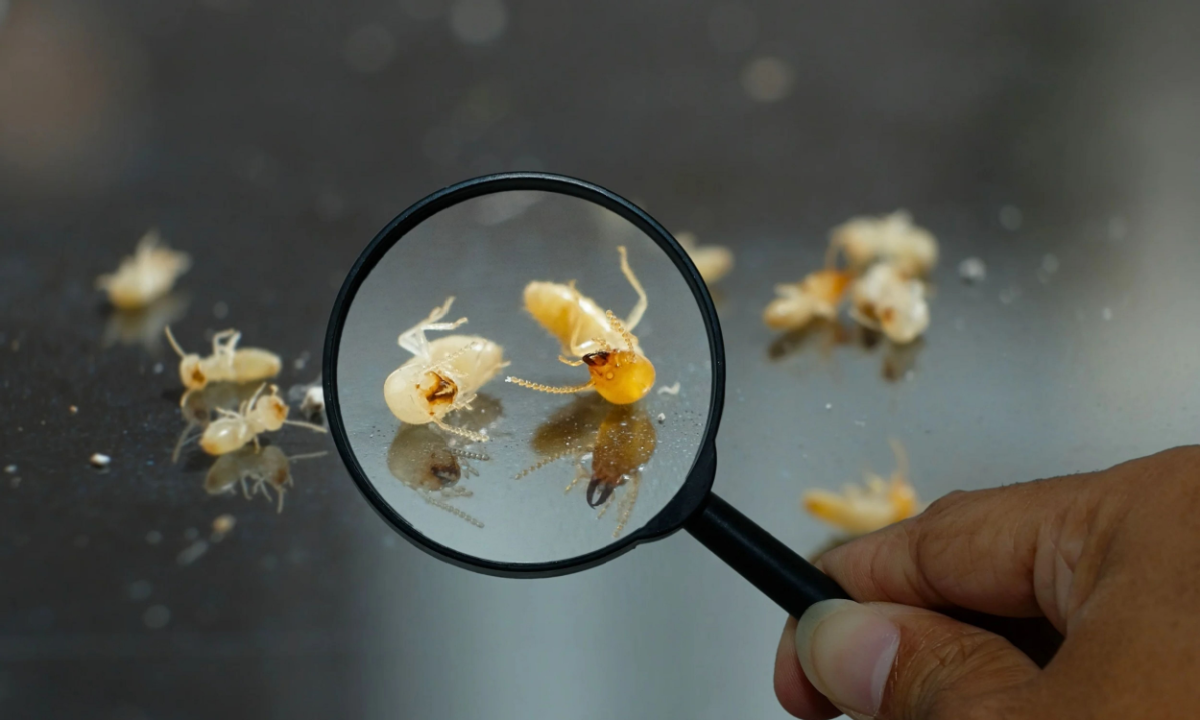There are many reasons to love the summer months, from the warm weather and longer days to the general carefree feeling in the air. However, one of the more unpleasant parts of summertime is the resurgence of bugs like mosquitos and stinging insects.
While most stinging insects play an important role in our ecosystem, it doesn’t change the fact that many of us go running in the opposite direction at the first sight of a wasp. Insect sting allergies are also fairly common, with 5% to 7.5% of Americans having a hypersensitivity to these pests’ venom.
Therefore, knowing how to identify each common stinging insect is essential for protecting yourself and your loved ones this summer. Learn about the different stinging insects you may encounter and how to avoid getting stung. Request a Free, No-Obligation Quote
Request a Free, No-Obligation Quote
Honey Bees
Honey bees can be identified by their thick, oval-shaped bodies with dark brown hair and yellow stripes. Honey bees are extremely important to the environment and pollinate $15 billion worth of crops in the United States each year, according to the U.S. Department of Agriculture. Honey bees prefer to reside in natural environments such as gardens, orchards, and meadows, and these bees are typically regarded as very docile insects that will only sting when provoked.
Carpenter Bees

Carpenter bees resemble large bumblebees and have round bodies with smooth, black abdomens. They are similar to honey bees in temperament and their ability to pollinate, but they can cause a lot of damage to wooden structures by boring into wood to create their nests. Carpenter bees prefer to nest in unpainted, weathered wood and are especially drawn to softer woods like pine and cedar.
Wasps
Wasps are typically thin, hairless insects with three distinct body parts: a head, a thorax, and an abdomen. Wasps consist of a large category of stinging insects, including hornets, yellow jackets, and paper wasps. These critters will become aggressive with humans if they feel that their nest is being threatened or their food supply is low, which is why your best bet is to avoid the area surrounding a wasp nest to avoid getting stung. Wasp nests built above ground can typically be found in bushes, trees, or attics.
Hornets
Hornets have reddish-brown heads and thoraxes and can be identified by their thin waists. Unlike the previous insects mentioned, hornets are known to be aggressive and can swarm in large numbers when provoked. Hornets prefer to nest on the branches of trees and shrubs but tend to spend the winter months nesting in the crevices of home siding and rotten logs.
Yellow Jackets
Yellow jackets are black in color with distinct yellow markings on their head and abdomen. Yellow jackets are among the most aggressive stinging insects, and they are known to target honey bee hives and eat their bees and larvae. These insects can also sting multiple times, making them one type of pest you don’t want to mess with. Yellow jackets prefer to nest on the forest floor, as well as on rock walls and sometimes inside structures.
Mud Daubers

Mud daubers are lesser-known wasps that travel solo to build mud nests consisting of tubes on an exposed surface. Unlike other types of wasps, mud daubers are not easily agitated and are not known to sting, even when provoked. Mud daubers are thin and black in color and have what is known as a “thread waist,” referring to the long, skinny segment between the thorax and abdomen.
Tips to Prevent Getting Stung
Not all stinging insects are aggressive, but it doesn’t mean you shouldn’t take proper precautions.
- Wear Long Clothing – One of the best ways to protect yourself from getting stung by a stinging insect is to wear long clothing when spending time outdoors. This is especially important if you plan on spending an extended period of time doing outdoor activities like gardening or hiking. Be sure to tuck your pants into your boots, keep your sleeves pulled down, and wear gloves while gardening for the best chance of protecting yourself.
- Avoid Perfumes – Perfumes and strongly-scented body products can attract stinging insects, so it is best to avoid using these products if you’re planning to spend time outdoors. In addition to perfumes, insects may also be attracted to scented body lotions, shampoos, and even flavored lip glosses, so it may be in your best interest to skip the fragranced products and opt for unscented ones.
- Bathe Daily – Insects are attracted to strong odors, so be sure to bathe daily to avoid these pests. Wearing clean clothing is also important for this reason, as stinging insects are more likely to linger near you if you have a strong scent.
- Avoid Flowering Plants – Stinging insects are known to hang around sweet-smelling flowers, which is why you will typically see more of them during the summer months when plants and flowers are in full bloom. When gardening or hanging out in the backyard, be sure to be aware of your surroundings and try to avoid stinging insects like wasps and hornets, as they may become aggressive if you enter their space.
- Contact an Exterminator – Contacting an exterminator is typically your best bet when dealing with stinging insects. While many of them, such as honey bees, are known to be generally docile, wasps can quickly become a nuisance and put you and your loved ones at risk of being stung. An experienced pest control professional will be able to assess the situation and recommend the best course of action.
FAQs
How do I know if I was stung or bitten?
In most cases, it can be difficult to differentiate a sting from a bite. Most insect bites release salvia, which causes redness and irritation. Venom from a sting can do the same thing, but it will be less pronounced. Ultimately, if you have an allergic reaction, you were most likely stung by an insect.
What is worse? A yellowjacket or hornet?
On average, yellow jackets are more aggressive and feature a smooth stinger, which can sting repeatedly and painfully.
Why do bees sting unprovoked?
Honeybees will defend their colony and sting if they feel you are a threat to their habitat. Request a Free, No-Obligation Quote







